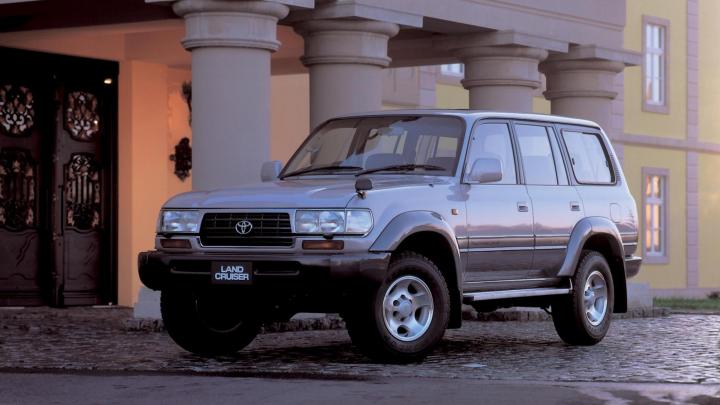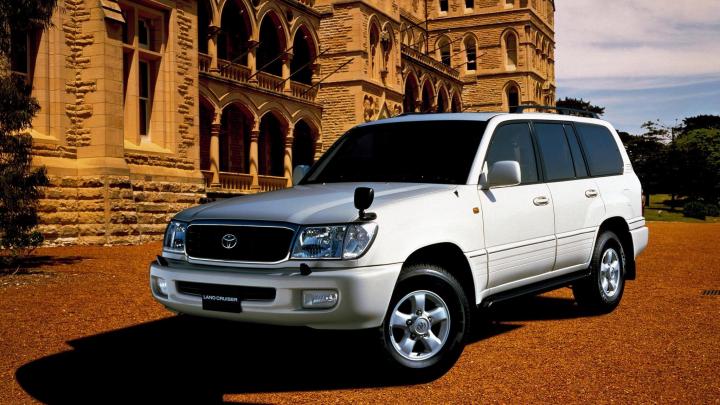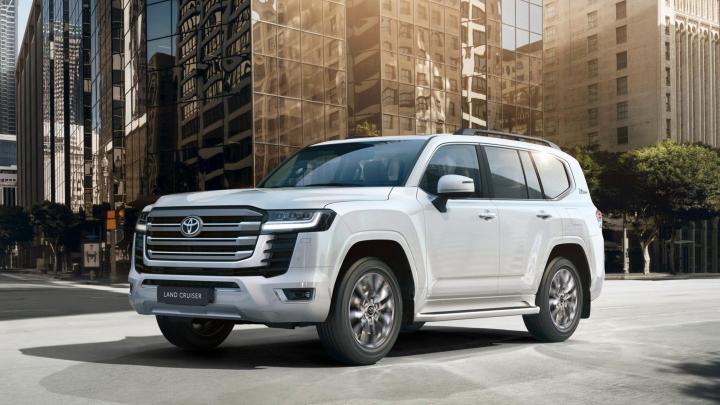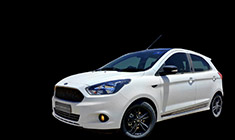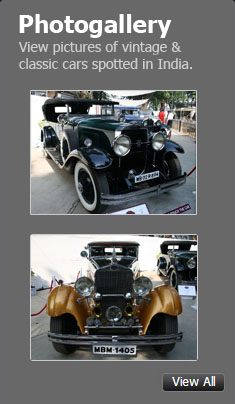News
Toyota Land Cruiser: Which generation of this SUV is your favourite
Let's stick to only the Station Wagon series as they're the most popular breed of Land Cruisers in India.
BHPian Shreyfiesta recently shared this with other enthusiasts.
Your favourite generation of the Toyota Land Cruiser
The Land Cruiser is one of the longest-running nameplates of Toyota. In fact, the name was coined by Hanji Umehara who was inspired by another tough-as-nail off-road vehicle. “In England, we had another competitor – Land Rover. I had to come up with a name for our car that would not sound less dignified than those of our competitors. That is why I decided to call it Land Cruiser," he stated.
The off-road-focused workhorse is adorned across the globe for its ruggedness and versatility since its advent. We should not forget that the 1950s were the era of the legendary "Willys", and other car manufacturers willy-nilly had to obey fashion trends. The reasons are not so important - the important thing is that at the very end of the 1950s, the Toyota BJ model was launched in the market, equipped with a 3.4-litre engine. It immediately won the hearts of motorists, who appreciated the powerful frame made of steel profile, continuous axles front and rear, engine reliability and many different options, increasing the already high permeability.
Four years later, the "Toyota 25 BJ" received its own name - "Land Cruiser". As you know, nothing lasts forever under the moon - so the "Land Cruiser" was constantly modernized by the efforts of Toyota experts, and more modifications and versions were created.
Nevertheless, a wise decision was made to abandon revolutionary changes and follow the path of evolution. With each new generation, engine power and weight were increased, starting from the 70 series, the front suspension became spring, the comfort of the car increased, but the traditional frame structure was preserved, as well as a reliable all-wheel drive transmission.
In addition, another principle was sacredly observed, the Land Cruiser was not only intended for Arab sheikhs and British lords, but for operation in real off-road conditions too. Toyota themselves divides the Land Cruiser brand into three different segments: Station Wagon, Heavy Duty and Light Duty.
Station Wagon generations include J55, J60, J80, J100, J200 and the latest J300. Light duty versions (renamed as Prado in 1990) were introduced to bring a lifestyle element to the Land Cruiser range. These include J70, J90, J120 and J150 generations. Heavy Duty models were characterised by flat, heavy-gauge steel body panels and an almost-vertical glasshouse. BJ Series, J20, J40 and J70 are the generations which come under Heavy Duty category.
And let's talk only about the Station Wagon series as they're the most popular breed of Land Cruisers in India. So, among the various generations, please let us know which is your personal favourite.
J55 (1967-1980)
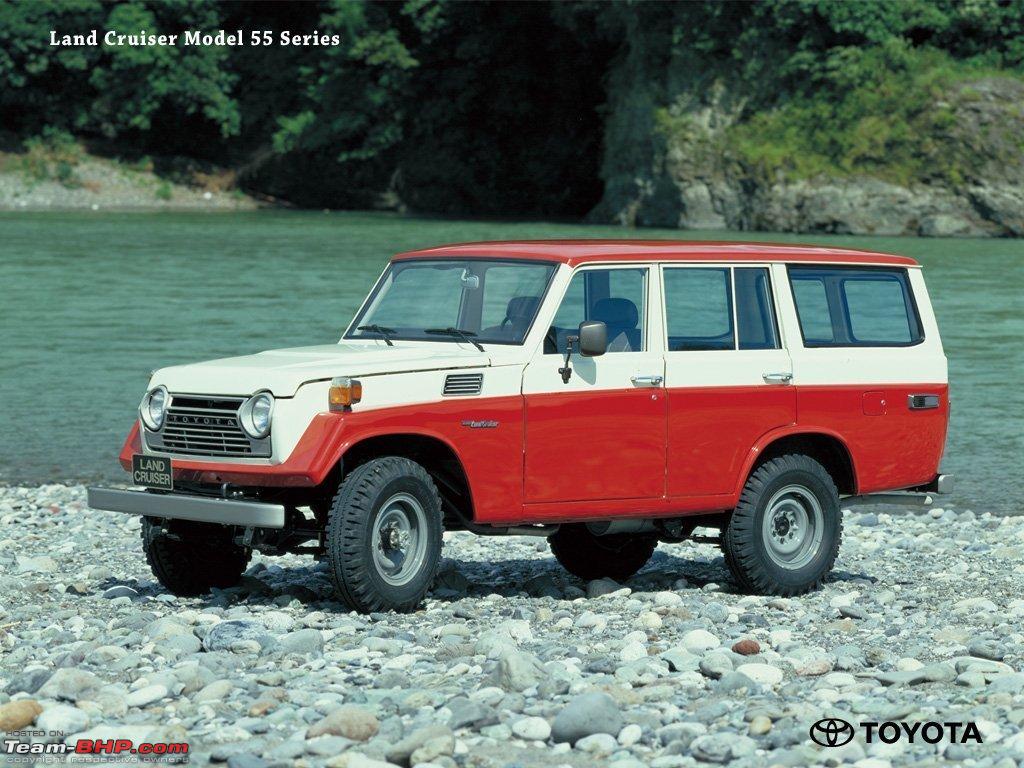
In 1967, the FJ55 generation of Land Cruiser was introduced as a replacement for the FJ45V, with a wheelbase of 2700 mm. The Land Cruiser was born as an all-wheel drive all-terrain vehicle, but the market began to accept it as a useful vehicle for transporting goods, which led to an increase in demand for this vehicle with a roomy body that could carry a large number of people and cargo. A complete model upgrade, from the FJ45V to the FJ55, took place seven years before the transition from the J40 series to the BJ40 series.
Starting with this generation, designers finally had the opportunity to pay more attention to the Land Cruiser, creating serious sketches and life-size models. Keeping some of the features of the previous 40 series, the look of the Land Cruiser FJ55 had received completely new details. Compared to more compact models, its body dimensions were increased, but when driving, the feeling was as comfortable as in a passenger car. The FJ55 in fact was intended not only for work but also for recreation. Although the FJ55 was the successor to the FJ45V, it was still a completely new model that had very little in common with its predecessor. All chassis, with the exception of the axles, was completely redesigned.
Mechanically the FJ55 remained very much like the J40 and FJ45V, it just used the same 3.9-litre inline-six cylinder engine, 3-Speed gearbox, and high/low range transfer box. Even though the FJ55V's engine was largely the same F engine used in the 40 Series FJ45V, it should be noted that significant improvements were made to it, especially in the cylinder heads.
In 1975, improvements to the F-type engine resulted in the 4.2-litre 2F engine, which was installed in the new FJ56V. Among other changes, one can list a rounded hood, the disappearance of a triangular window in the windows of the front doors, front turn indicators integrated into the sidelights. Other minor changes were made, but the basic design remained unchanged.
J60 (1980-1989)

Work on the Land Cruiser J60 began back in 1976 under the guidance of Toyota's then chief engineer, Hiroshi Osawa. The goal was to create a full-size SUV with the comfort of a passenger car that could compete in the US market with large American jeeps. At first, it was supposed to make a full-size SUV with an independent front suspension, but for the sake of simplicity and endurance, they settled on dependent axles and a fully spring suspension. The first Land Cruiser J60 rolled out of the production line in 1980 in two engine options: 4.2-litre 2F petrol and 3.4-litre 3B diesel. In the same year, the American magazine Off-Road awarded the J60 with the SUV of the Year award.
When this J60 generation rolled off the Toyota assembly line in Japan for the first time, it was billed as a comfortable all-terrain vehicle that pushed the boundaries of time and space in the ads of the day. Mechanically the J60 was simply a progression from the tried and proven FJ40. Year 1985 saw the introduction of a 4.0 litre inline six-cylinder 3F petrol engine into the vehicle, codenamed J62. This particular engine was not available in the US market production models until 1988. Also, Toyota began to offer the 12H-T 4.0-litre turbocharged diesel engine around the same time. This engine featured direct-injection and developed 134bhp at 3500 rpm along with 314Nm of torque.
In 1987, the 60 Series was slightly restyled: two round headlights were replaced by four square ones, wider tires were installed, as well as colorful bodywork. In 1988, the JF62 station wagon was added to the lineup. At the same time, the 3F type engine had received electronic control, which was reflected in its index as 3FE. The example of the J60 generation actually shows how the Land Cruiser which started its life as a semi-military truck, gradually turned into a comfortable passenger car. This phenomenon laid the foundation for the subsequent appearance of the J80 and J100 generations.
J80 (1989-1998)

Land Cruiser J80 was born in the favorable environment of an economic boom. However, it lasted for eight years, getting larger and more luxurious until it was replaced in 1998 with the J100. A handful of these were imported to our country also during the mid-nineties, and there still exists some in pristine condition. Aim of the J80 was to be at the forefront of both technology and luxury. The exterior underwent a complete design change but some accents were left to remind people that were still driving a Land Cruiser. J80 featured two types of tailgates: higher grade model opened vertically, while the base model opened out from the middle.
J80's interior was entirely new as compared to that of J60, incorporating some of the basic round dash and modern design features introduced in the 4runners of the day. In 1994 the interior underwent another design change in keeping with the times, but this was slight and involved only the dashboard and steering wheel. Almost all trims came with a full-time 4WD drive train. In 1993, front and rear electric differential lockers that propelled the Land Cruiser into off-road history was introduced. Airbags and ABS became standard across all grades in August 1996. A more modern grille with the Toyota logo also was introduced in this update.
Body of the SUV tended to scrape the ground during serious off-roading, since it had a low side step and long rear overhang. The J80 was still an off-road capable SUV, because of its solid axles and optional electric lockers at the front and rear. American-spec J80 got only petrol engine options with automatic transmissions while overseas models had diesel units and optional second reserve fuel tank in some models. Most powerful version was the 4.5-litre one which belted out 212bhp at 4600rpm and 373Nm at 3200rpm. The J80 was on sale in Venezuela till the year 2008.
J100 (1998-2007)

Released in March 1998, Toyota Land Cruiser 100 Series included both J100 and J105 models. J105 carried over chassis and powertrains from Land Cruiser J80 with coil-suspended solid axles and inline six-cylinder petrol and diesel engines. J100 however had a wider chassis, independent front suspension and newer engine options. The standard variant had six seats and a vertical barn-type tail gate. RV, GXL and GXV grades had eight seats across three rows and a conventional tail gate. Standard safety equipment for J100 and J105 included front outboard seatbelt pretensioners.
Cygnus version of Land Cruiser was released in the Japanese market for export to the US. Styled just like the LX470, this model was positioned as the luxury class Land Cruiser 100, more prestigious than the regular J100 itself. GXL and RV variants were loaded with dual front airbags, ABS and load-limiting seatbelts. From November 1999, Land Cruiser GXV was further equipped with electronic stability control, traction control, EBD and brake assist. As a result of the introduction of 4WD traction control, a rear differential lock was no longer fitted. Range-topping GXV variant was distinguished by its 16" alloy wheels, 6CD changer, climate control air-con, velour upholstery and cruise control. In the 1999 update, GXV got dual-zone climate control and front fog lamps too. Central locking, power windows and side step were standard across all grades.
In June 1999, a limited-run Snowy variant was launched to commemorate the 50th anniversary of the Snowy Mountains Hydroelectric scheme. To coincide with the introduction of turbo engines, Toyota updated the Land Cruiser in October 2000. 50th Anniversary edition came out in July 2001 with a chrome grille, headlight covers and '50th Anniversary' badges. Engine choices consisted of a 4.2-litre diesel, a 4.5-litre inline six and a 4.7-litre V8 petrol. A 4.2-litre six-cylinder turbo diesel engine also was released later in 2000. 4.7-litre V8 petrol being the most powerful, generated 228bhp at 4800rpm and 410Nm at 3400rpm. Two transmission options were offered: a 5-Speed manual and a 4-Speed automatic.
J200 (2007-2021)

Land Cruiser J200 was released in September 2007 as a successor to the J100 which stood in production for 9 years. The design was purely Japanese, it was created by stylists at the Toyota Center in the city of Aichi in accordance with the corporate philosophy of Vibrant Clarity. In general, both technically and aesthetically, there were no revolutions in the car from the previous generation. The same base, almost the same dimensions and a minimum of design frills. Changes and innovations in the Land Cruiser would not affect monumentality, for which this generation is loved and respected. It became less off-road in this generation. The protective plastic body kit and mouldings disappeared from the body.
The body was mounted on a frame chassis. The front wheel suspension was independent, and the rear wheel suspension was with a continuous axle. Front wheels of the novelty received springs instead of torsion bars, as a result of which the Land Cruiser became more comfortable on the go. For the same purpose, as basic equipment, the vehicle was equipped with an active suspension stiffness control system. Four different petrol engine options were available for the SUV : a 4.0-litre V6, a 4.6-litre V6, a 4.7-litre V8 and a 5.7-litre V8 at a later stage. The latter being the most powerful one, generated 381bhp at 5600rpm and 543Nm at 3600rpm. 4.7-litre 2UZ-FE V8 petrol was carried over straightly from the J100. Diesel version had a 4.5-litre V8 turbocharged motor that generated 261bhp at 3400rpm and 650Nm between 1600 to 2600rpm.
Also, J200 was the first officially launched Land Cruiser in India. It was introduced here sometime in mid-2009 and was available in two options initially. One had a relatively-normal 9 speakers setup and the other had an advanced 6 DVD, 14-speaker JBL premium speaker system with EMV screen and a moonroof. These grades cost ₹ 81.5lakhs and ₹83.0 lakhs ex-showroom respectively back in 2009. The 2012 facelift brought a few cosmetic changes like redesigned front grille, headlamps with HID low beams and a restyled front bumper. Next facelift for the J200 in the Indian market came out in November 2015. At the front, it received a three-bar grille with chrome surround and a restyled bumper. The bonnet featured power bulges too. Instrument cluster, centre console controls, MID and steering wheel also were updated. Toyota discontinued the J200 generation in India in January 2020 when BS6 emission norms came into effect.
J300 (2021-Present)

J300 is the latest iteration of the renowned off-roader, the Toyota Land Cruiser. The SUV was globally unveiled in July 2021 and went on sale in the Japanese market in August 2021. Japanese-spec J300 is sold in four 7-seater petrol variants: AX, VX, GR-Sport and ZX. 5-seater petrol variant is called the GX. Diesel-powered version of the variants like GR-Sport and ZX are available only with 5-seater configuration. Positioned as a mid-spec variant, the GR-Sport features a slightly different styling and smaller alloy wheels with taller profile tyres. It has front, rear and centre diff locks, e-KDSS (electronic Kinetic Dynamic Suspension System) and the bolted-on off-road efficacy. The e-KDSS system can actually independently lock and unlock the front and rear stabiliser bars.
The J300 also uses Toyota’s TNGA chassis which is shared with the Tundra pickup truck in the USA. This current generation continues a body-on-frame design but employs more high-strength steel in key areas to improve stiffness while using aluminium in some suspension components to reduce weight. Suspension is via a redesigned version of the old double wishbone front and five-link independent rear set-up, axles front and rear are rigid. Toyota has dumped the 4.5-litre diesel V8 in favour of a new, more powerful twin-turbo V6. 3.3-litre twin-turbo V6 diesel pumps out 302bhp of power and 700Nm of torque, which is an increase of 41bhp and 50Nm over the old V8. Other engine options include a 3.4-litre twin-turbo V6 petrol and a 4.0-litre V6 petrol, the latter is paired with a 6-Speed automatic transmission.
Toyota has confirmed that the J300 generation of the Land Cruiser, will arrive in our market by September 2022. The bookings of the SUV were open earlier this year, but the process was stopped soon due to the extremely low supply and availability of the SUV, partly caused by the semiconductor shortage crisis. What's even more interesting is that a politician from Tamil Nadu has imported a J300 Land Cruiser privately long before Toyota announced the launch of this model in India. The SUV is likely to be launched only with the 3.3-litre V6 diesel engine option initially. Deliveries of the initial batch units are expected to begin from January 2023 onwards. The upcoming Land Cruiser J300 is expected to be priced somewhere near ₹ 2.0 crore ex-showroom.
Here's what GTO had to say about the matter:
It's a tough one. I love the old-school 80-Series & there are still many well-maintained ones roaming the streets of India. It's a timeless classic. BHPian Harjeev was lucky to add one to his garage - thread link. Of all the discontinued generations, the 80-Series is my favourite.
To get one home though, it's the latest & greatest for me, the 300-Series. I like what Toyota has done with it, and the latest also means it's up-to-date in terms of engine & gearbox, equipment, safety, on-road behaviour etc.
Check out BHPian comments for more insights and information.
- Tags:
- Indian
- Member Content
- Land Cruiser



